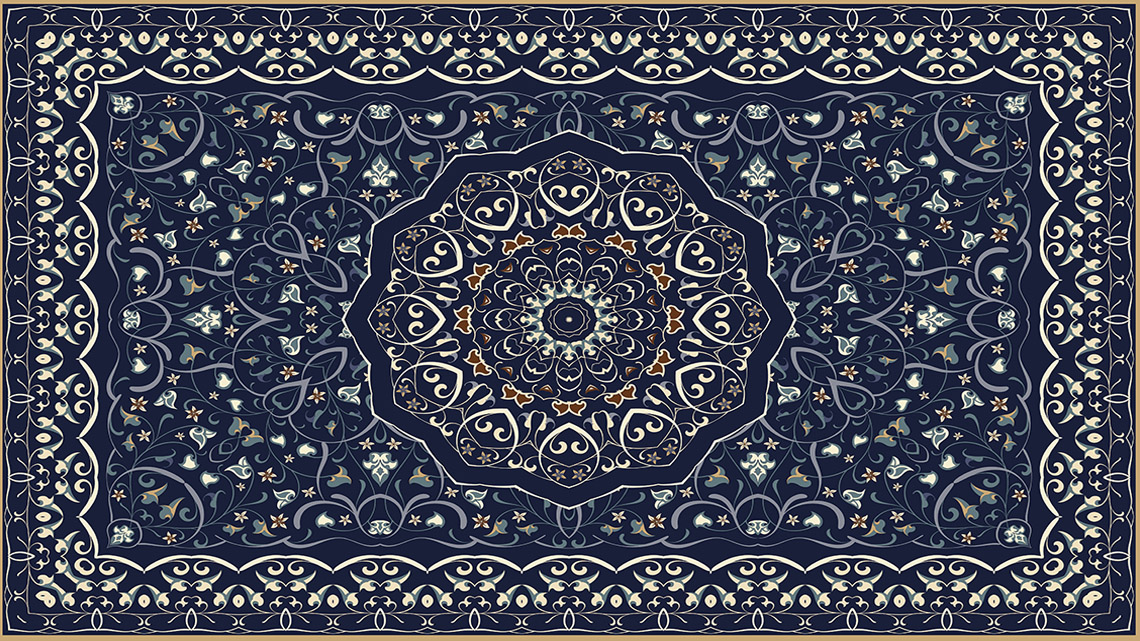Minds On
Recognizing a pattern
What do these objects have in common?
Consider the following questions. Record your responses digitally, orally, or in print.
- Where can patterns be found in nature? Give examples. What makes them a pattern?
- Where do you see patterns every day? Give examples. Why are they considered a pattern?
- How many ways can you show a pattern? Give examples.
Action
Task 1: Ways to represent patterns
Investigate the different ways patterns can be represented.
Pattern 1 model
Draw or record a detailed description digitally, orally, or in print for the following graph with points (1, 3), (2, 4), and (3, 5).
Extend the pattern by plotting the next three points. What are the coordinates? How did you decide what the next three points are?
The graph has an x-axis with values from 0–10, increasing by 1s.
The x-axis is labelled with values from 0–10 and goes up by 1s.
The points on the graph are going up in a linear pattern.

Press ‘Reveal’ to reveal a sample answer.
Pattern model 2
Examine the three models.
What is the pattern?
What changes in the model?
What stays the same?
Term 1 has 2 squares side by side, and 1 square on top of the square on the right.

Term 2 has 2 squares on the bottom, and 2 squares on top of the square on the right.

Term 3 has 2 squares on the bottom, and 3 squares on top of the square on the right.

Press ‘Reveal’ to reveal a sample answer.
Pattern model 3
Describe the following pattern. Extend the next three numbers in the pattern. Record your thinking digitally, orally, or in print.
3, 4, 5, (Blank), (Blank), (Blank)
Press ‘Reveal’ to reveal a sample answer.
Pattern model 4
Draw, or create a detailed description digitally, orally, or in print and complete the following Term/Value Table in your notebook or by using the following fillable and printable document. What is the pattern? Is there a relationship between the term number and the value? (1, 3), (2, 4), (3, 5), (4, (Blank)), (5, (Blank)), (6, (Blank)).
Press the ‘Activity’ button to access Term/Value Table.
What do you notice about the four pattern models completed? What are the similarities and differences? Is this an increasing, decreasing or repeating pattern? How do you know?
Press ‘Reveal’ to reveal a sample answer.
I notice the four pattern models all have similarities in what stays the same (the number) and what changes. They are all increasing patterns. I know this because the next term numbers are always greater than the one before, there were more squares every time and the line in the graph kept going up.
I also noticed that all four models are the same- they are just different ways of representing the pattern.
Using the relationship between the term number and the term value, create an algebraic expression, or a term value chart or a description, for a pattern previously discussed, where x represents any term and when you plug in the term number, you get the term value (y).
Using your algebraic expression, or chart can you find the term value for the 10th term? 20th term? 100th term?
Task 2: Creating and representing a pattern

Use the following patterns below or create a growing pattern of your choice.
Pattern A:
Term 1 has 4 toothpicks forming a square.
Term 2 has 7 toothpicks forming 2 squares beside each other.
Term 3 has 10 toothpicks forming 3 squares beside each other.
Pattern B:
Term 1 has 3 toothpicks forming a triangle.
Term 2 has 5 toothpicks forming 2 triangles beside each other.
Term 3 has 7 toothpicks forming 3 triangles beside each other.
Term 4 has 9 toothpicks forming 4 triangles beside each other.
Pattern C:
Term 1 has 5 toothpicks forming a trapezoid with 2 toothpicks along the bottom one on the top and one on each side.
Term 2 has 3 toothpicks along the bottom, 2 on the top and one on each side.
Term 3 has 4 toothpicks along the bottom, 3 along the top and one on each side.
Term 4 has 5 toothpicks along the bottom, and 4 toothpicks along the top and one on each side.
Record your responses to the following questions digitally, orally or in print.
- What is the constant in the pattern you chose? How do you know?
- Can you find a relationship between the term number and the term value for the pattern?
- How would you turn the relationship between the term number and the term value into an algebraic expression?
- Could you use the algebraic expression to find the 5th term? 10th term? Can you prove your expression works by modelling the 5th and 10th term a different way?
Consolidation
Patterning
For the pattern you created or selected in the Action section complete the following:
- Show the first 6 term models using a method of your choice.
- Complete a t-table, or audio description with the term numbers and term values.
- Graph the linear pattern (digitally or on graph paper) or create a detailed audio description about the term and value points and how they could be plotted on a graph.
- Create an expression to represent any number (x) of objects in a design.
- How many objects would you need for the 100th term? How do you know?
Reflection
As you read the following descriptions, select the one that best describes your current understanding of the learning in this activity. Press the corresponding button once you have made your choice.
I feel...
Now, expand on your ideas by recording your thoughts using a voice recorder, speech-to-text, or writing tool.
When you review your notes on this learning activity later, reflect on whether you would select a different description based on your further review of the material in this learning activity.



